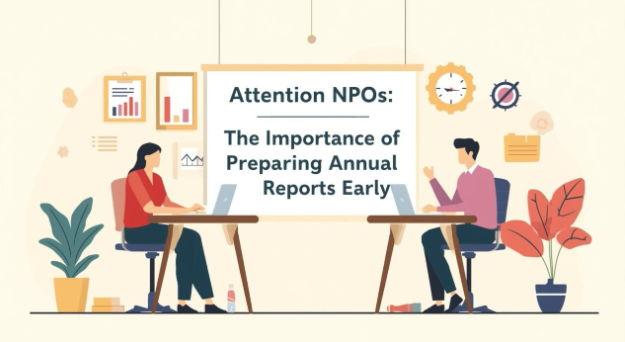Leadership | Entrepreneurship | Management | Planning | Strategy | Writing for Finance | Development finance expert | International speaker
25 de outubro de 2025
We are now moving into November and, in the nonprofit sector, this should initiate the final cycle of reporting. This approach ensures that January is not merely the beginning of a new calendar year—it is a critical period for demonstrating accountability, transparency, and impact. For Nonprofit Organisations (NPOs), preparing annual reports well before the turn of the year can significantly influence their credibility, stakeholder trust, and fundraising success.
A well-prepared annual report serves as more than a compliance document; it is a strategic communication tool that articulates an organisation’s mission, achievements, and impact. According to Ebrahim (2005), transparency and reporting mechanisms are central to ensuring accountability within the nonprofit sector. By presenting measurable results and strategic objectives clearly, NPOs create stronger foundations for dialogue with donors, partners, and beneficiaries.
January should mark the launch of new partnerships and donor engagements, not the beginning of the reporting season. By this time, NPOs should already have compiled their impact evidence, financial statements, and key performance indicators (KPIs). Early preparation enables organisations to use the first quarter effectively, pursuing new funding opportunities and building strategic collaborations.
Delays in report preparation can undermine credibility and reduce opportunities. As Connolly and Hyndman (2013) note, timely and relevant information is essential for maintaining stakeholders’ trust, particularly in environments where resources are scarce and competition for funding is intense.
The general benefits of early report preparation include enhanced strategic planning, as completing reports early provides leadership teams with clear insights into past performance and future goals. Moreover, improved partner confidence is a direct outcome, since potential funders and partners assess professionalism through timely, data-backed reporting. Stronger fundraising narratives are also possible when NPOs use complete metrics to craft compelling impact stories that resonate with donors. Additionally, operational efficiency is achieved, as anticipating year-end reporting reduces stress and last-minute errors, allowing teams to focus on mission delivery.
To institutionalise this practice, NPOs should embed annual reporting into their organisational calendar as an ongoing process, rather than as a year-end rush. Regular data collection, quarterly evaluations, and stakeholder feedback loops can ensure reports are both accurate and meaningful. As Benjamin and Campbell (2015) suggest, effective impact measurement depends on integrating evaluation and reporting into daily management practices.
In essence, preparing annual reports in advance is an investment in organisational resilience and transparency. It positions NPOs to start the year not in retrospective mode, but looking forward—ready to forge partnerships and expand their social impact.
References
Benjamin, L. M., & Campbell, D. C. (2015). Nonprofit performance: Accounting for the agency of clients. Nonprofit and Voluntary Sector Quarterly, 44(5), 988–1006.
Connolly, C., & Hyndman, N. (2013). Towards charity accountability: Narrowing the gap between provision and needs? Public Management Review, 15(7), 945–968.
Ebrahim, A. (2005). Accountability myopia: Losing sight of organisational learning. Nonprofit and Voluntary Sector Quarterly, 34(1), 56–87.


